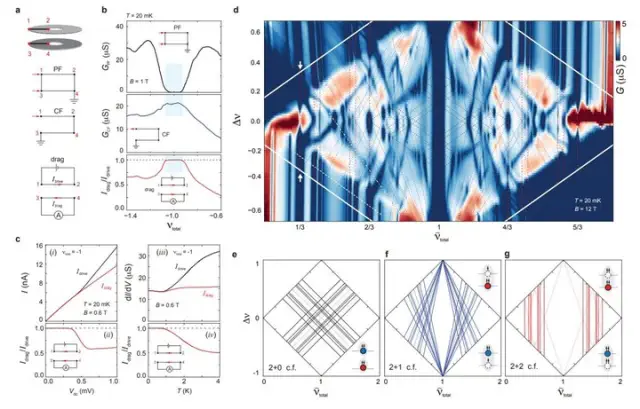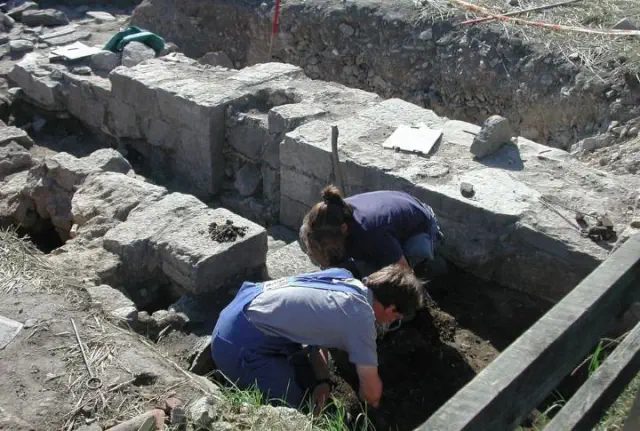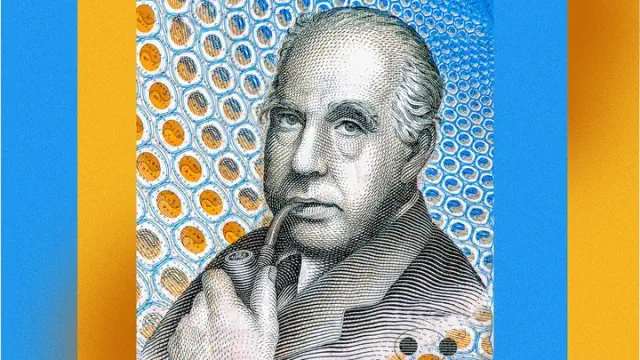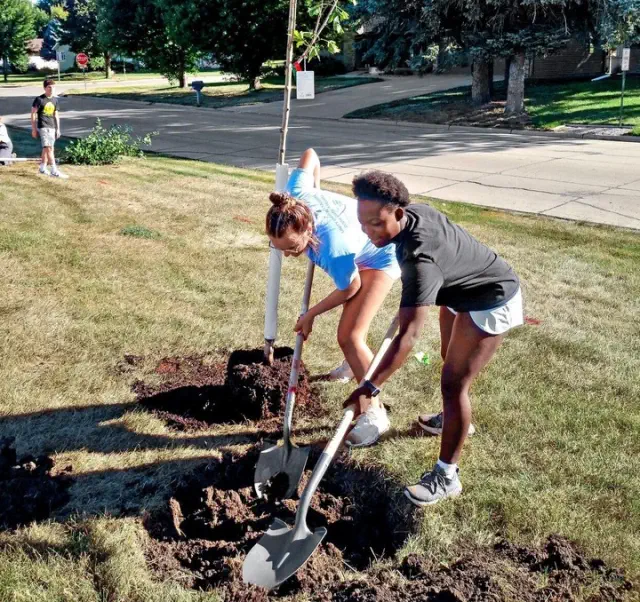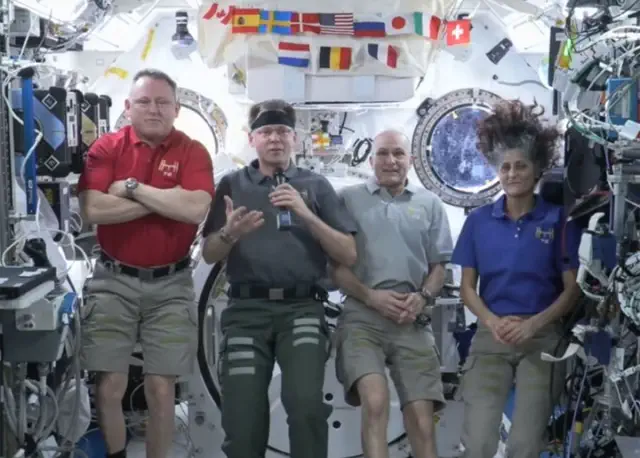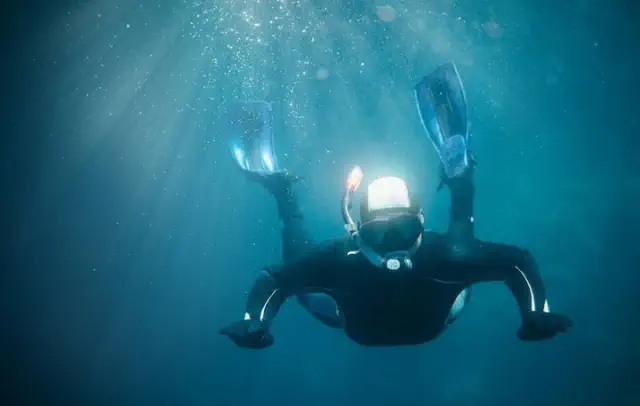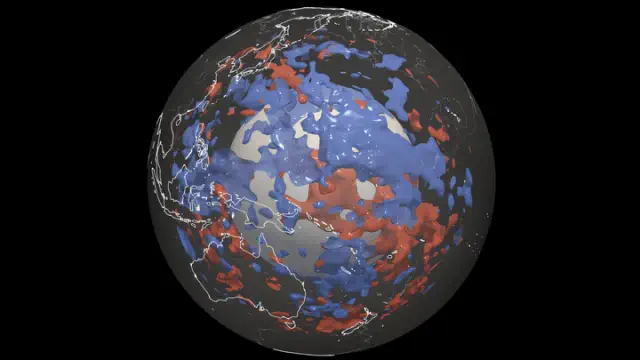The Unity Earth Science course has launched the Genesis Arboretum.
View pictures in App save up to 80% data.
Students Claire Van Voorst and Eve Baart, both in their junior year, are busy digging a hole for a sapling at Unity Christian High School as they work together to establish an arboretum.
ORANGE CITY—This fall, Unity Christian High School welcomed 26 new trees to its campus, thanks to the efforts of Kevin Haan’s earth science class, who successfully achieved their dream of creating the Genesis Arboretum.
The foundation of the project was established last year.
"Haan mentioned that in last year's earth science class, the primary focus was on obtaining permission to initiate a tree planting project, aiming ultimately to establish an arboretum. The students dedicated their efforts to all the preparatory work necessary for this initiative."
During the 2023-24 academic year, students in Haan's earth science class explored the numerous advantages of trees, identified suitable planting sites, and showcased the ways in which an arboretum could foster interdisciplinary learning experiences. They compiled their findings into a formal proposal and delivered a 30-minute presentation to Unity Christian's superintendent, director of learning, and head groundskeeper, effectively making their case.
“To make a long story short, they agreed and now offer landscaping services along with a wide selection of plants, shrubs, and trees.”
As the arboretum initiative started to take shape, it was evident that a name was necessary. Students proposed various options and held a vote to decide. Ultimately, they chose the name Genesis Arboretum, referencing the opening book of the Bible, which describes how “The Lord God made all kinds of trees grow out of the ground — trees that were pleasing to the eye and good for food.”
Haan mentioned that the name also embodies his school’s dedication to stewardship and responsible caretaking.
"We serve as guardians and caretakers of creation. Our goal is to convey two important ideas to the students: firstly, that this is indeed rooted in science and biology; and secondly, as Christians, we have a responsibility to nurture and protect the environment."
Trees play a vital role in an ecosystem, offering shade, serving as habitats for various birds and wildlife, minimizing soil erosion, and enhancing air quality.
As the development of Genesis Arboretum progressed, an important task was to choose the tree species that would thrive on the grounds of Unity Christian.
“Haan mentioned, ‘The Iowa DNR provided us with a list of native trees suitable for Iowa, as the main goal of this grant is to promote diversity among native species. We aimed to include a wide variety of species, and we managed to acquire nearly one of each type available.’”
View pictures in App save up to 80% data.
Junior Caleb Altena digs a hole while junior Brody Emmelkamp looks on with a shovel on the grounds of Unity Christian High School. Students in Kevin Haan’s earth science course established an arboretum. Photo submitted
The area around the school building features a diverse selection of new trees, including three types of oak, a Kentucky coffee tree, two varieties of honey locust, a birch, and a spruce. Arboreta are classified into four accreditation levels, and Genesis Arboretum holds a Level 1 status. To achieve this level, an arboretum must contain a minimum of 25 species of woody plants, whether they be trees or shrubs, and be located in a site that is accessible to the public.
This year, Senior Ava Postma is enrolled in Haan’s earth science class, and her family runs Arden Tree Farms located in Washington state. For the project, Ground Effects obtained some of the trees from her family's business.
Postma shared, “My great-great-grandfather was one of the original founders, and this tree farm has been a cherished family-owned business for four generations. I aspire to uphold that legacy and hope to play a role in its future. It's incredible to witness how everything is intertwined.”
Haan emphasized species diversity while choosing the trees, partly to fulfill the requirements for achieving Level 1 arboretum status. Nevertheless, his decision was influenced by additional considerations as well.
"We aim to avoid the situation we're currently facing with the emerald ash borer," stated Haan.
The emerald ash borer is a harmful invasive insect that targets ash trees and has been found in all 99 counties of Iowa. Increasing species diversity within arboretums enhances their ability to withstand diseases or pests that can gradually eliminate a specific type of tree. Take the American chestnut, for instance; it was once a prominent tree species in the eastern United States until a foreign chestnut blight fungus started to proliferate in the early 1900s. As a result, this species is now regarded as functionally extinct.
Unity Christian has planted new trees throughout its 10-acre campus located on the western side of Orange City. The decision on where to plant these trees was made in partnership with the school's administration and grounds crew. Care was taken to steer clear of areas designated for athletic teams and potential future construction sites.
Haan explained, “These areas may not be practical for the daily operations of Unity, yet they still serve a purpose for biology and ecology. We essentially tried to maximize the available space wherever possible. We added a significant amount of greenery on the east side of the property, adjacent to Michigan Avenue, and also planted several trees along the western edge of the parking lot.”
The trees next to the parking area also line a cornfield, and in time, they will form a magnificent canopy over an area that was once overrun with weeds and prone to erosion.
Day of Planting
On a school morning in late October, Haan's earth science students planted saplings that typically ranged in height from 6 to 8 feet.
“We had about 32 children out there, digging holes and relocating trees using the Gators,” Haan remarked. “I teamed up with a representative from Ground Effects, and we focused on spacing and determining the ideal locations for each tree, considering factors like size and soil type. After that, I provided the kids with maps and instructed them, ‘Now it's time to place the trees where they belong; let’s start digging those holes.’”
A representative from the DNR was present to offer a brief lesson on the advantages of trees and to assist with the planting and mulching process.
Esther Eppinga, a junior, and her planting team received detailed guidelines on the appropriate depth and width for the hole designated for the ginkgo tree they were tasked with planting.
“It took us thirty minutes to excavate the hole and plant the tree,” Eppinga mentioned. “The hole measured approximately 2½ feet across and was 1 foot deep. For the following weeks, I made sure to water the Royal Raindrops crabapple — we provided it with a bucket of water every other day.”
The fall season was surprisingly dry, making the task of watering the newly planted trees a more challenging endeavor than anticipated.
Eppinga mentioned, “The toughest aspect of the entire ordeal was when we had to transport 5-pound buckets brimming with water while making an effort to keep our clothes dry.”
In addition to enhancing the aesthetic appeal of Unity Christian’s campus, the trees will also serve as valuable educational resources for Haan’s students.
View pictures in App save up to 80% data.
Image uploaded.
“I have a passion for birds, which is why I plan to have the children monitor bird populations and species annually as we continue to plant trees and allow them to mature,” Haan remarked. “Our goal is to increase both the quantity of birds on our land and the variety of species that visit. Trees provide habitat for countless animals and significantly contribute to the resilience of ecosystems.”
This spring, he intends to start monitoring more data points with his students.
"Once the weather improves a bit, we plan to begin measuring the diameter and circumference of the trees. We'll track these measurements annually to understand growth rates and how they correlate with climate changes and drier autumns," Haan stated.
He will ask his students to investigate the relationships between growth rates and various factors, such as weather patterns.
Haan mentioned that he has found it easy to engage his students with the arboretum project.
"They've truly embraced it and made it their own," he remarked.
A proactive student decided to produce a promotional video aimed at raising awareness in the community about the arboretum project and inspiring donations of trees, possibly in memory of a cherished individual. Additionally, this year's class assigned each student, either alone or in pairs, the responsibility of caring for a specific tree.
"We had plenty of trees, so I could easily assign one to each child and say, 'This one's yours to take care of' — it helps them feel a sense of responsibility for that tree."
During the autumn season, Postma dedicated her time to nurturing her tree.
“My tree is an Aspen Prairie Gold,” Postma mentioned. “During the fall season, I made sure to water it every Monday, Wednesday, and Friday, almost without fail.”
Haan expressed his desire to plant additional trees on the school property, despite the fact that the current trees take up a significant portion of the designated space.
Senior Abby Van Roekel is relishing the benefits of the project to date, which promises to transform the landscape of Unity Christian’s campus for years to come.
“We invested a significant amount of time in research and planning to reach this point,” Van Roekel mentioned. “As this is my final year at Unity, I sincerely hope that the students who study earth science next year will appreciate the joy and beauty of God in the work we've initiated.”
